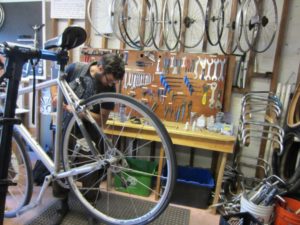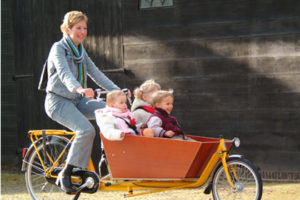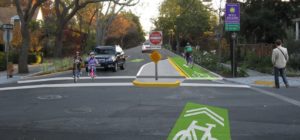Considered one of the most important social philosophers of the 20th Century, Ivan Illich proposed in his 1974 book, Tools For Conviviality, a retooling of society itself. Tools for Illich were not just mechanical devices, but also institutions, industrial productivity, transportation systems, and information sharing. He defined convivial tools as those most accessible by each person, the least controlled by others, and without restricting equal use by others. His 1973 book, Energy And Equity, posited that “Participatory democracy postulates low-energy technology. Only participatory democracy creates the conditions for rational technology.” Illich advocated for a scaling back of our energy intensive consumer society long before most recognized how such a society results in ecological collapse and climate disruption. He proposed simpler autonomous tools for the sake of equity, justice, and the health of our souls. In this context, the focus is bicycles.

The bicycle as the most convivial of tools
The motor car fails as a convivial tool, as it is dependent on centralized production far beyond the capability of individuals or a cottage industry, and its use severely restricts those without an automobile of freely using any form of non-motorized mobility. Anywhere that they were introduced to non-industrialized communities, automobiles expropriated convivial public spaces by virtue of their size and speed, the lanes, roads, village squares, and market places that previously had been the equally shared commons. In the words of Ivan Illich, “The present world is divided into those who do not have enough and those who have more than enough, those who are pushed off the road by cars and those who drive them” – Tools for Conviviality: Illich.

In describing the superior efficiency of human powered mobility Illich wrote “Man on his feet is thermodynamically more efficient than any motorized vehicle and most animals. Man on a bicycle can go three or four times faster than the pedestrian, but uses five times less energy in the process. He carries one gram of his weight over a kilometer of flat road at an expense of only 0.15 calories. The bicycle is the perfect transducer to match man’s metabolic energy to the impedance of locomotion. Equipped with this tool, man outstrips the efficiency of not only all machines but all other animals as well”. He goes on to say “The invention of the ball-bearing made possible the bicycle, allowing the wheel to become useful for self-powered mobility. When combined with the tangent-spoked wheel and the pneumatic tire, the ball-bearing signaled a revolution, a true crisis, a true political choice . . between more freedom in equity, or more speed . . two new types of locomotion, respectively symbolized by the bicycle and the car” – Self-Powered Mobility: Energy and Equity; from Energy and Equity: Illich.
The envelope please: equity or speed?
It’s apparent everywhere that humans have a preference for speed, usually without realizing the implication for curtailing equity. Speed gives a unique pleasure, and a thrill like no other. But society’s choice of speed also received no small boost from sales marketing by the merchants of steel and petroleum. Simultaneously, public officials wishing to curry favor from the auto-oil crowd chose to spend the lion’s share budgeted for motorways, which severely constrained funding for bikeways. This scenario played out virtually everywhere, subsidized by Federal highway money, the epitome being the Interstate Highway System begun in the 1950’s.
When Davis CA and a few other cities like Boulder, Eugene, Madison, and Palo Alto tried to shift the emphasis toward separated bikeways in the 1960’s, a small, highly vocal, yet misguided group of bicyclists actually fought it, and delayed protected bikeways for decades. With the motto “Same Roads. Same Rules. Same Rights”, the so-called “vehicular cyclists” argued for access to the same pavement, rather than equal access to safety by cyclists of all ages and skill levels. Being only 6% of potential bicyclists, the message of vehicular cyclists would not have been so influential, except that it played into the hands of traffic engineers who made it their excuse to spend nothing on bikeways – One Surprising Reason the U.S. Lags Behind the World on Bikeways.

This issue of equity is not about access to a bicycle, which nearly anyone can have. The issue is access to a roadway safe from speeding motor vehicles. Today, it’s become clear that equity between bicycles and motor vehicles means parity of speed – that of bicycle velocity, or 15 mph. This makes it safe for everyone, whether they are people who walk, people who pedal, or people who drive. At 15 mph, everyone is visible, everyone is aware, and everyone can safely share the same space convivially. This was Ivan Illich’s prescription for convivial transportation, and it is the core design principle of Dutch “woonerfs”, which translates as “living street”. In the U.S., the concept is called “neighborhood greenways”, or “bike-walk streets”, or “bicycle boulevards” – Bicycle Boulevard images.


Recent Comments